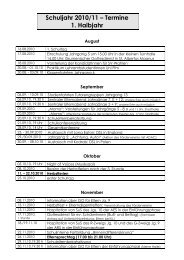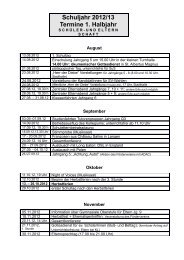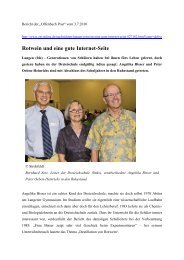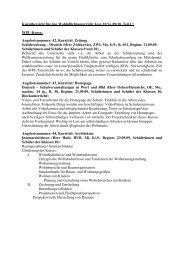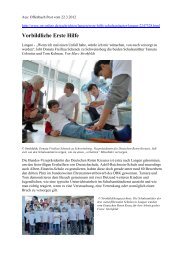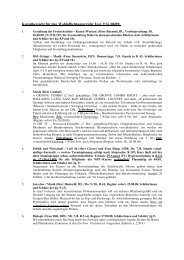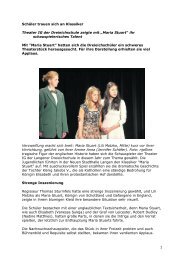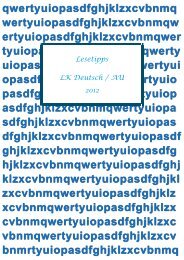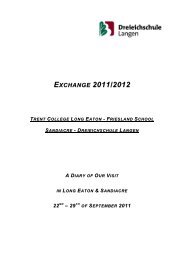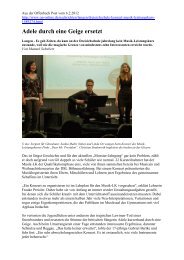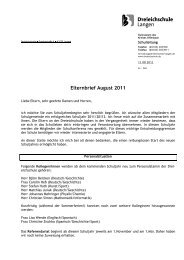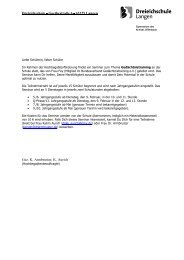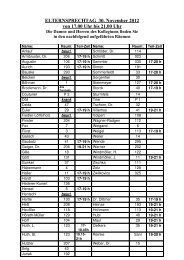brain
brain
brain
Erfolgreiche ePaper selbst erstellen
Machen Sie aus Ihren PDF Publikationen ein blätterbares Flipbook mit unserer einzigartigen Google optimierten e-Paper Software.
98<br />
HOCHBEGABUNG UND SCHULE<br />
Die Längsschnittstudie von Freeman (GB)<br />
� Freeman, J. (1979). Gifted children. Their identification and development in a social context.<br />
Lancaster, England: MTP Press Limited.<br />
� Freeman, J. (1991). Gifted children growing up. London: Heinemann.<br />
� Freeman, J. (2001). Gifted children grown up. London: David Fulton Publishers.<br />
Das Längsschnittprojekt der Johns Hopkins Universität (USA) zur mathematischen<br />
Hochbegabung<br />
� Stanley, J.C., Keating, D.P. & Fox, L.H. (Eds.)(1974). Mathematical talent – discovery, description<br />
and development. Baltimore: Johns Hopkins University Press.**<br />
� Benbow, C.P. & Stanley, J.C. (1983). Academic precocity: Aspects of its development.<br />
Baltimore, MD: Johns Hopkins University.**<br />
� Lubinski, D. & Benbow, C.P. (1994). The study of mathematically precocious youth: The<br />
first three decades of a planned 50-year study of intellectual talent. In Subotnik, R.F. &<br />
Arnold, K.D. (Eds.)(1994). Beyond Terman: Contemporary longitudinal studies of giftedness<br />
and talent. Norwood, NJ: Ablex, 255–281.*<br />
� Lubinski, D., Benbow, C.P., Webb, R.M. & Bleske-Rechek, A. (2006). Tracking exceptional<br />
human capital over two decades. Psychological Science, 17, 194–199.**<br />
Kurze Darstellung einiger weltweiter Forschungsprojekte über besondere Begabung<br />
� Subotnik, R.F. & Arnold, K.D.(Eds.)(1994). Beyond Terman: Contemporary longitudinal<br />
studies of giftedness and talent. Norwood, NJ: Ablex (nicht vollständig).*<br />
Förderung<br />
� Khatena, J. (1982). Educational psychology of the gifted. New York: Wiley.*<br />
� Parke, B.N. (1989). Gifted students in regular classrooms. Boston, MA: Allyn and Bacon.<br />
� Van Tassel-Baska, J. (1992). Planning effective curriculum for gifted learners. Denver, CO:<br />
Love Publishing Company.<br />
� Maker, C.J. (Ed.)(1993). Critical issues in gifted education. Vol. III. Austin, TX: PRO-ED.<br />
� Sheffield, L.J. (Ed.)(1999). Developing mathematically promising students. Reston, VA:<br />
NCTM.<br />
� Borland, J.H. (Ed.)(2003). Rethinking gifted education. New York, NY: Teacher College<br />
Press.*<br />
� Colangelo, N. & Davis, G.A. (Eds.)(2003). Handbook of gifted education (3rd ed.). Boston:<br />
Allyn and Bacon Pearson Education.*<br />
Intelligenz und Kreativität<br />
� Carroll, J.B. (1993). Human cognitive abilities. A survey of factor-analytical studies. Cambridge,<br />
MA: Cambridge University Press.**<br />
� Herrnstein, R.J. & Murray, C. (1984). The bell curve. Intelligence and class structure in<br />
American life. New York, NY: Free Press.**<br />
� Brandt, C. (1996). The g factor. General intelligence and its implications. Chichester:<br />
Wiley.<br />
� Neisser, U., Boodoo, G., Bouchard Jr., T.J., Boykin, A.W., Brody, N., Ceci, S.J., Halpern,<br />
D.F., Loehlin, J.C., Perloff, R., Sternberg, R.J. & Urbina, S. (1996). Intelligence: Knowns and<br />
unknowns. American Psychologist, 51, 77–101.*<br />
� Eysenck, H.J. (1998). Intelligence: A New Look. New Brunswick: Transaction Publishers.<br />
� Jensen, A.R. (1998). The g factor. The science of mental ability. Westport, CT: Praeger.**



